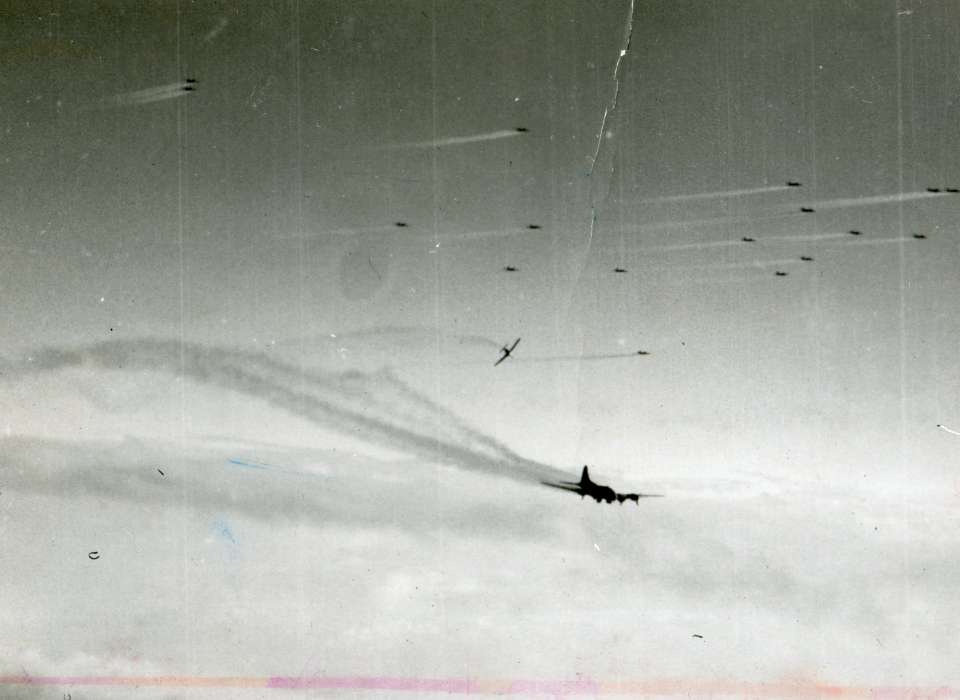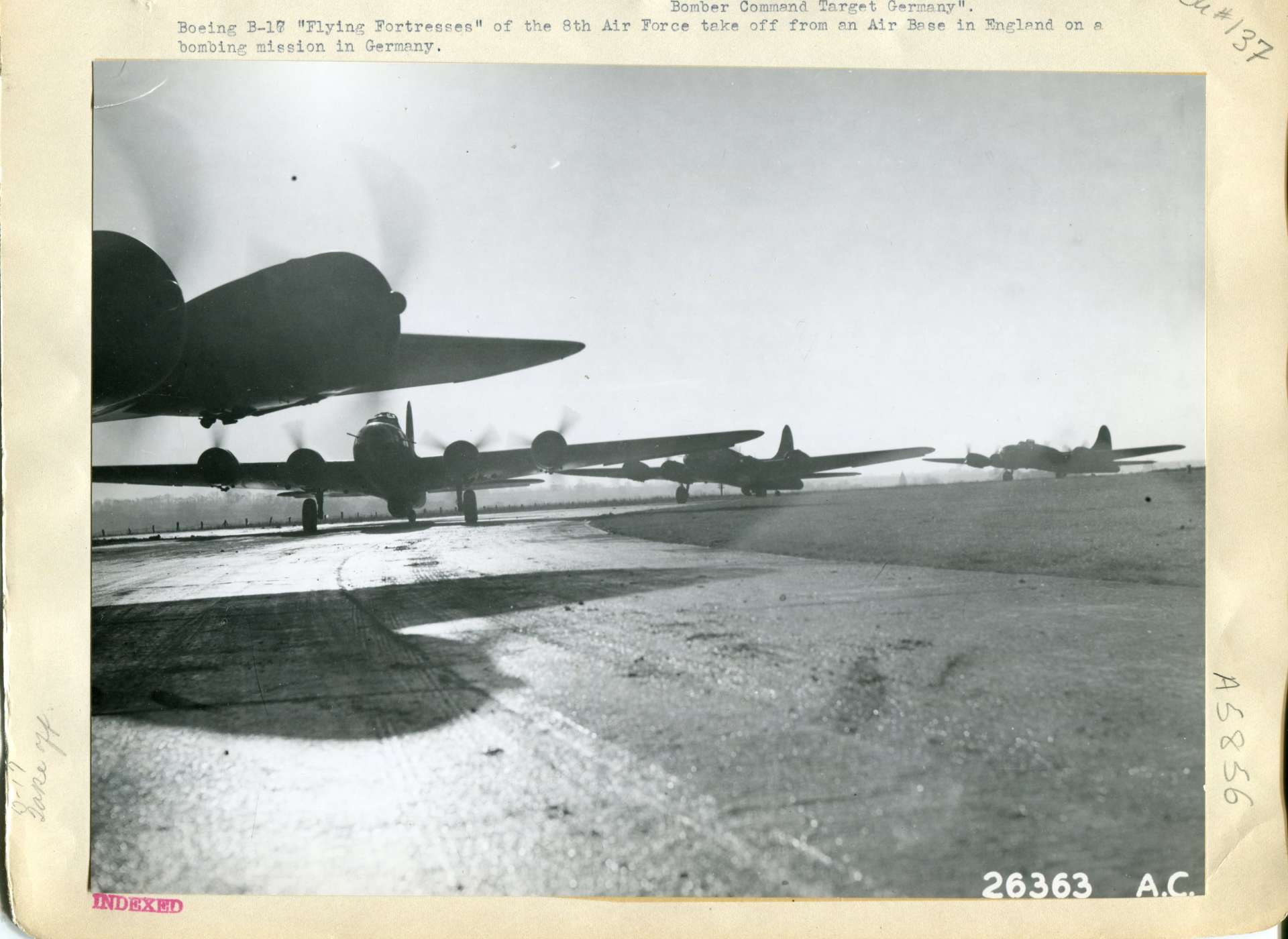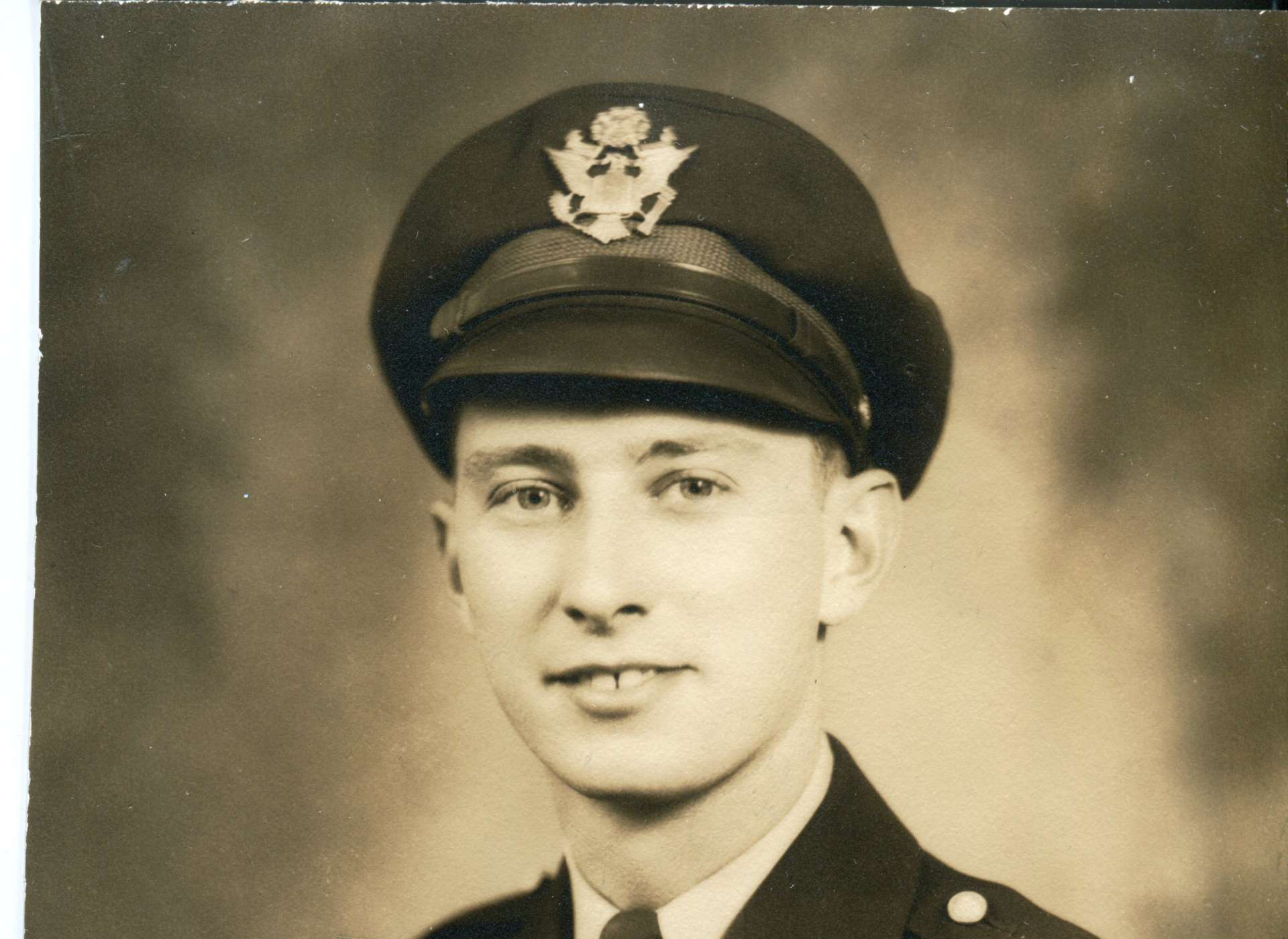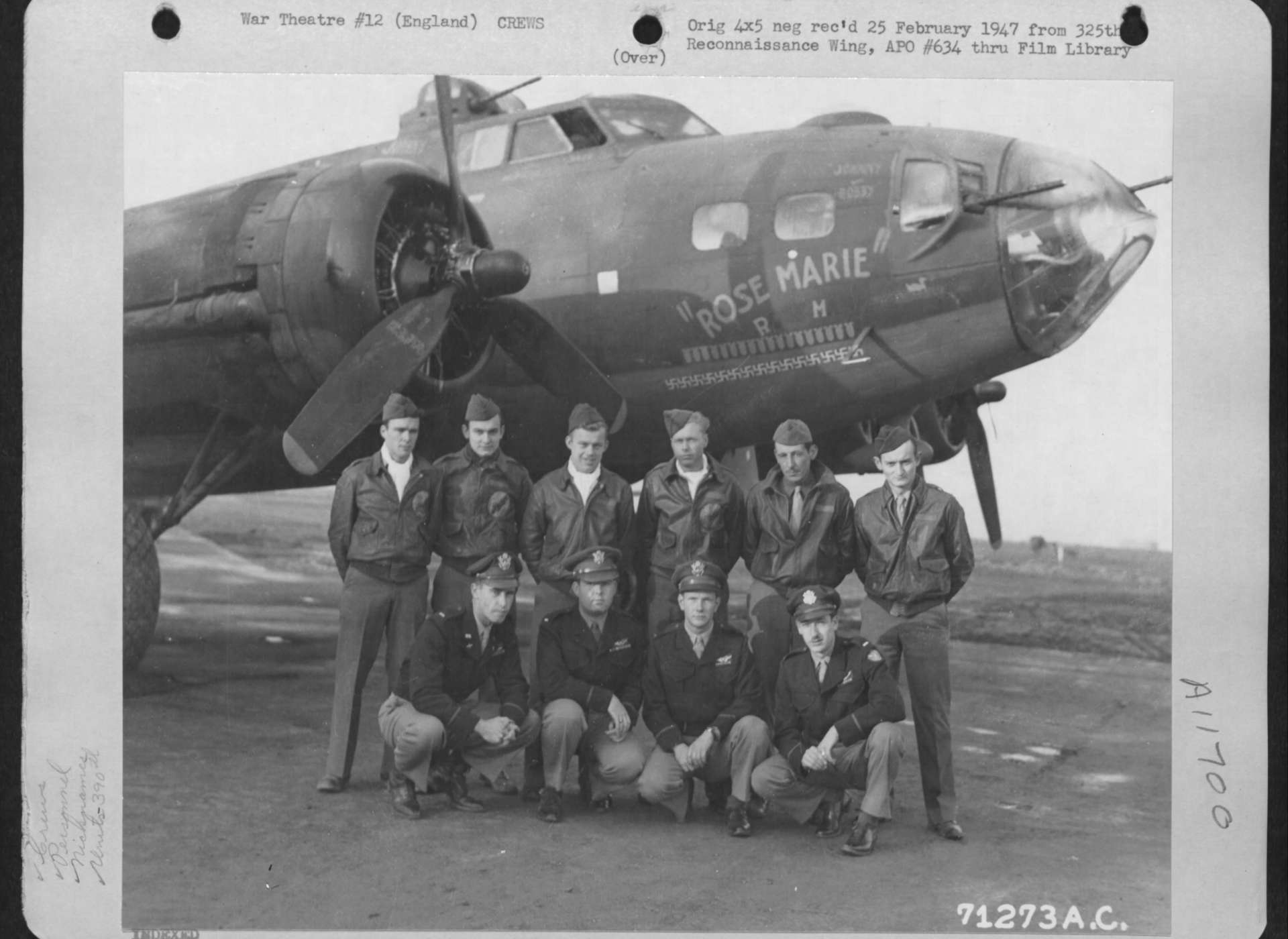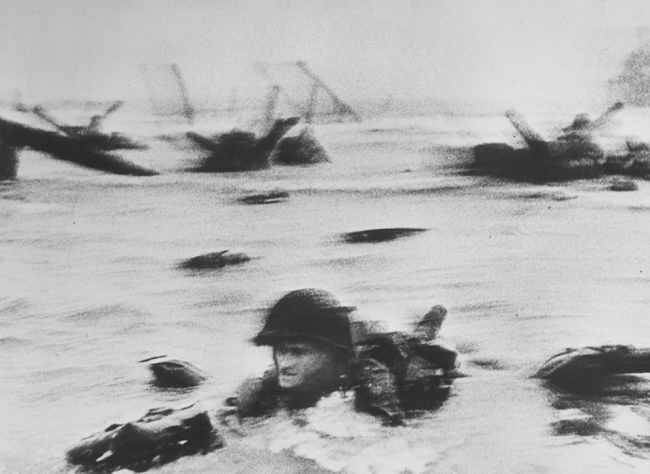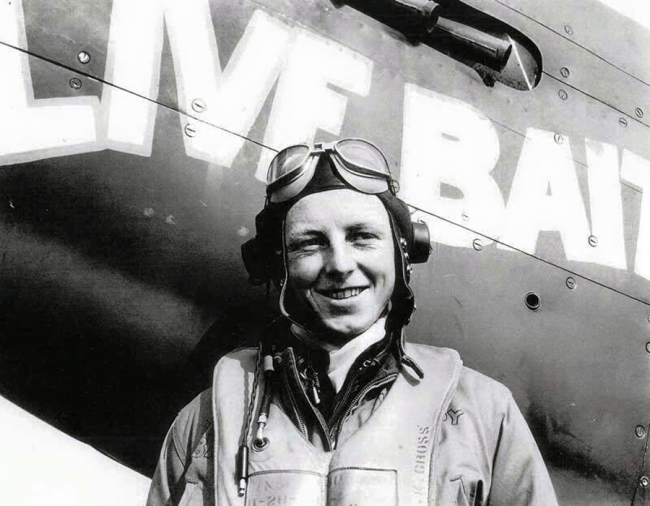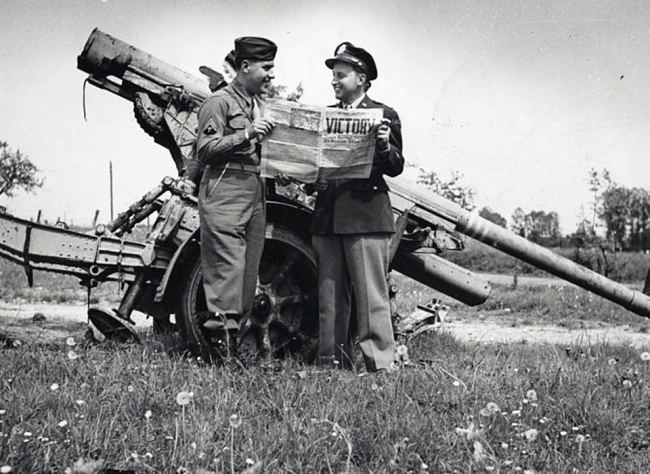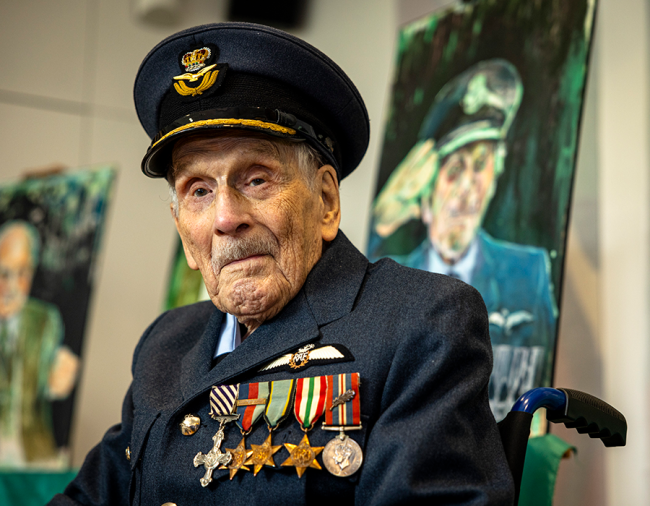The United States Eighth Air Force deployed to England with a daunting mission: destroy Germany’s ability to wage war, and gain command of the European skies to pave the way for an Allied land invasion. In order to accomplish it, thousands of American airmen had to face the constant threat of death daily.
German anti-aircraft fire, or flak, was one of those deadly threats. Some targets were more heavily defended by flak batteries than others, but flak was an accepted part of the job at hand, no matter how deadly.
The other more feared threat was the German Luftwaffe. In 1943, the Luftwaffe was at peak strength against American bombers. The pilots flying the ME-109s and FW-190s were professionals—the best in the world. Some of the German pilots had been flying in combat since 1936. Many had dozens of aerial victories; some had over 100. John Keema of the 390th Bomb Group said, “No matter the target they were defending, they were balls to the wall. They were brave. They didn’t hesitate.”
The American theory on daylight bombing lay in the aircraft the crewmen flew: the rugged Boeing B-17 “Flying Fortress,” the main heavy bomber of the Eighth Air Force. The plane carried 10 crewmen, and sported 13 50-caliber guns for self-defense. It was famous for bringing crews home, even when three of its four engines failed. The B-17’s firepower, combined with that of other aircraft in the formation, would be plenty to protect bombers from enemy attacks.
Theory was one thing. Practice was another.
In November 1942, German fighter ace Egon Mayer found the weakest place on a B-17—directly in the front of the aircraft. Defended by only four machine guns, the nose of the B-17—and more importantly the cockpit—was vulnerable to a head-on attack. The attack required great skill and courage, as the German and American aircraft closed at an astonishing speed. The German pilot only had seconds to aim, fire, and peel away before careening into the heavy bombers. Tested by the developer himself, Mayer found the tactic worked exceedingly well. By December, the head-on attack was the preferred method of assailing American heavy bombers by Luftwaffe fighter pilots. Casualties among bomber crews began to mount steadily as B-17s were being blown out of the sky with growing consistency.
-

A B-17 taxis down a runway.
-

A portrait of Captain John Luckadoo.
-

Here is B-17 Rose Marie, which served in the 390th Bombing Group.
Throughout the summer of 1943, American bomber crews sustained heavy casualties. Losses of 30 or more aircraft—300 men—were not uncommon throughout the summer. John Luckadoo, a pilot in the 100th Bomb Group recalled that he “calculated a 400 percent turnover in the first 90 days” of combat. In 1943, bomber crews were tasked with a 25-mission tour of duty. Most crews never made it past their fifth. The Luftwaffe owned the skies over Europe and the men of the Eighth Air Force were paying the price.
A fatalistic sense of acceptance became prevalent. A popular saying at the time was that to “fly in the Eighth Air Force then was like holding a ticket to a funeral —your own.” Abnormal behavior became more common. Insomnia, irritability, sudden temper flashes, nausea, weight loss, blurred vision, introverted withdrawal, inability to concentrate, and Parkinson’s-like tremors were a few of the symptoms seen by flight surgeons. Nightmares so vivid that they caused the men to wake up screaming in the night were not uncommon. Men became jumpy and jittery, the “Focke-Wulf Jitters,” or “flak happy,” became commonly used terms in the Eighth Air Force.
As summer turned to autumn in 1943, the Americans felt that, despite the casualties, the air war would ramp up in intensity. Targets that directly affected the German war machine became priorities. Fighter-production facilities, ball-bearing plants, shipyards, and other military targets were in the crosshairs of the Eighth. Conversely, the Eighth was in the crosshairs of the Luftwaffe, determined more than ever to defend their cities and facilities.
Stuttgart, Germany, and the Bosch factory located there were the targets for the Eighth on September 6. Stuttgart was at the very limit of the B-17 in 1943, and fuel was a precious commodity on this particular mission. As usual, as the fortresses approached German territory, German fighters attacked. The assaults were violent, head-on passes that resulted in high casualties among the lead crews. Yet, despite the opposition, the bombers continued toward the Bosch factory. Once over the target, however, the mission began to unravel, as a cloud front had unexpectedly moved in, obscuring its view from the bombardiers perched in the noses of their B-17s 25,000 feet above. General Robert Travis, aerial commander of the mission, made the decision to circle the target and wait for the clouds to move. As the bomber formation circled the target, the tight combat boxes of B-17s became easy targets for enemy fighters. Three passes were made and, the clouds had not broken, all while precious fuel was being burned and B-17s were being shot down by fighters and anti-aircraft artillery. The B-17s had been over the target for nearly thirty minutes when the bombs in the lead aircraft finally dropped.
The bombs missed the target almost completely. Forty-five B-17s failed to return to England that night.
The obvious confusion in the air over Stuttgart and the heavy casualties sustained yet again caused many men to begin to doubt the leadership of the air campaign. A survivor of the Stuttgart mission recalled, “We began to wonder if they were trying to kill all of us. There were fewer and fewer guys returning every day.” One of the many who didn’t return from Stuttgart added, “We felt as if they didn’t know what the hell they were doing up there, especially over Stuttgart. They were just aimlessly flying around.” The fact that the aerial commander made four passes at the target astounded many of the crew. That leadership allowed the men to be exposed to enemy fire for what seemed like an eternity, for little or no results in terms of bombing accuracy, made the crews irate. The pilot continued, “It was a good thing I was shot down honestly. Because if I hadn’t been, I would have turned in my wings I was so fed up.”
The morale among the Eighth Air Force crews was at a low point in September, yet the worst was yet to come. October 1943 yielded the heaviest casualties sustained up to that point in the air campaign.
Beginning on October 8 and continuing until October 14, Eighth Air Force crews attacked targets all over Germany in an attempt to continue the pressure on the Germans. October 8’s target was the shipyard in dreaded Bremen, known as “Flak City” by the aircrews. The flak was so thick, Luckadoo said that “if you put your wheels down you could taxi on it.” Combined with the expected fighter opposition, October 8 was not going to be an easy day for the bomber crews. Luckadoo recalled that the enemy fighters attacked the bombers as soon as they crossed the border into France and continued all the way through to the target. Generally, when bombers approached the target and entered what was called the flak field, enemy fighters peeled away to land, refuel, and rearm.
On October 8, they did not peel away. The enemy fighters, so determined in their mission to deter the B-17s, remained in attack mode over the flak field and flew through their own anti-aircraft fire in order to deliver their assaults. As they approached the initial point, or IP, the fighters pressed even closer. Luckadoo remembered one such attack on the B-17 called Piccadilly Lilly: “Out of the corner of my eye I saw this flight of FW-190s barreling into our squadron. Aiming right for us … they kept coming, kept coming … they may have killed the pilot of the lead ship or else he was so determined that he was going to take down a bomber that he flew into … impacted the ship that I was formed on. When they went down … I had to dump my nose to keep them from taking me with them.” The fighters over Bremen were relentless in their attacks. By the end of the mission, the Eighth Air Force had lost 30 bombers and 300 men. The 100th Bomb Group lost 17 of 19 deployed. The 381st lost seven of 18 deployed. The 300 men shot down were obvious casualties, but when the battered bombers returned to their home bases, they carried another 301 wounded in their fuselages.
For the survivors, there wasn’t much time for contemplation of those lost. The next day proved to be an even longer day, followed by another, and another. The German fighters reaped a devilish harvest in the skies over Bremen, a harvest repeated in the next few missions in what became called “Black Week” by those fortunate enough to live through it.

WWII Air, Land & Sea Festival
Warbirds in flight, tanks on parade, PT-305 in the water. October 27-29 at New Orleans Lakefront Airport.
Seth Paridon
Seth Paridon was a staff historian at The National WWII Museum from 2005 to 2020. He began his career conducting oral histories and research for HBO’s miniseries The Pacific and holds the distinction of being the first historian hired by the Museum’s Research Department. In the 12 years he was Manager of Research Services, Seth and his team increased the oral history collection from 25 to nearly 5,000 oral histories.
Cite this article:
MLA Citation:
APA Citation:
Chicago Style Citation:
